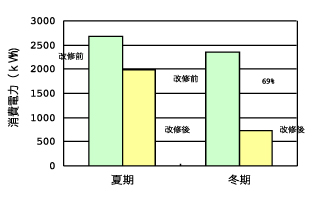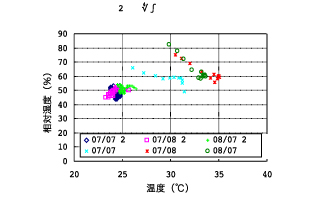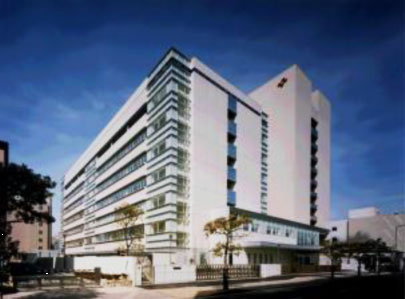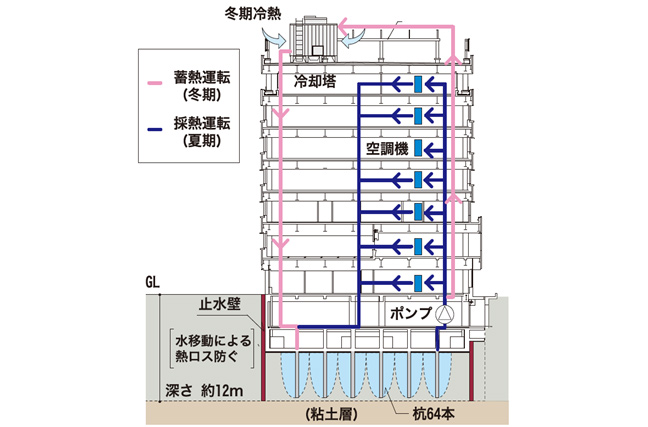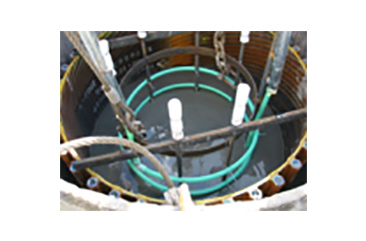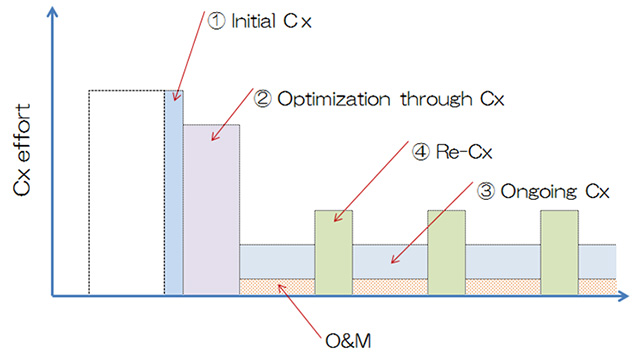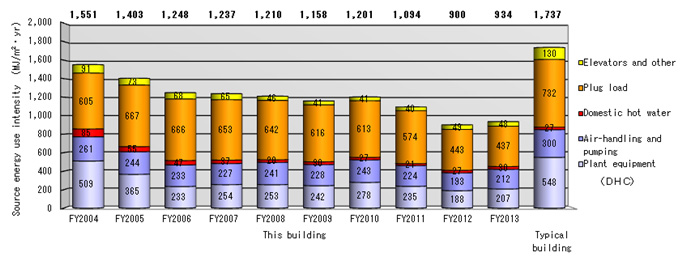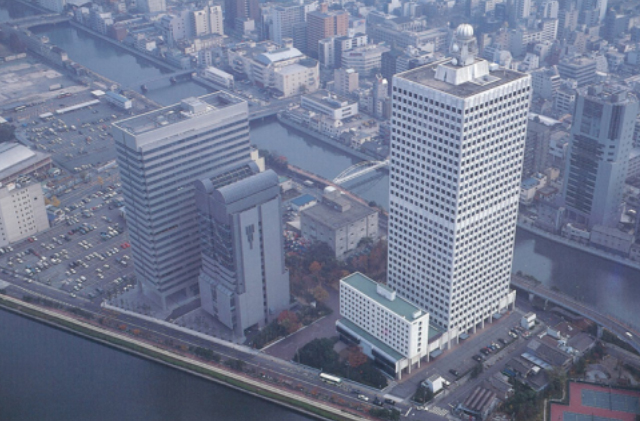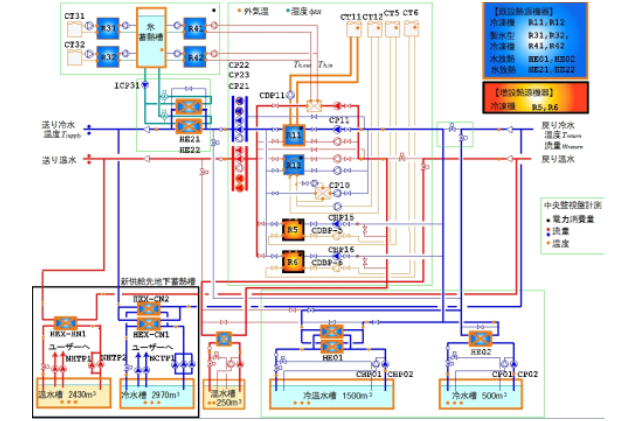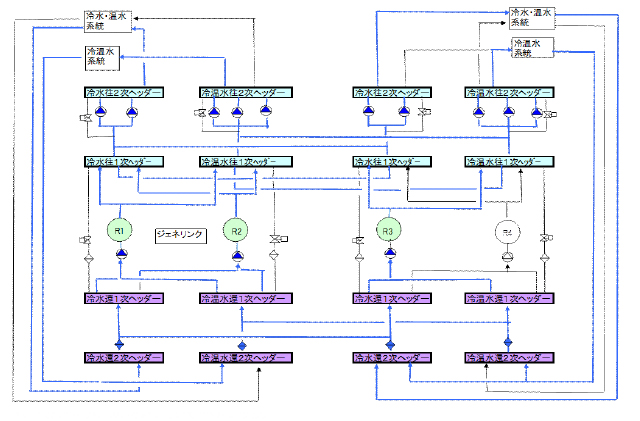Existing Building Cx Case
- Adaptation of new technologies such as the underground TES system, and operational efforts to optimize the building performance continuously through Ongoing Cx.
Received the 15th SHASE 10 Year Award recognizing - Proposal of Operational Improvement Using Simulation Tools Developed for Commissioning Achieved an Annual 3 Million Yen of Energy Cost Savings
- Verification of the Environmental Performance of a Historical Office Building with Cogeneration
- Full-Scale Retro-Commissioning Realizing an over 25% of Energy Savings
Ongoing Cx for Yonden Building Annex
Adaptation of new technologies such as the underground TES system, and operational efforts to optimize the building performance continuously through Ongoing Cx.
Received the 15th SHASE 10 Year Award recognizing
Period
Mar 2004 – Apr 2014
Team
【Client】 Yonden Consultants ,Inc.
【Cx Manegement Team(CMT)】Harunori Yoshida(CxPE), Yasunori Akashi, Daisuke Sumiyoshi、Takao Katsura, Jeongsoo Kim, Masato Miyata, Toshihiro Yasuoka(CxPE),Yuichiro Amano(CxTE), Yoichi Kobayashi(CxTE)
Facility Data
Yonden Building Annex, completed in March 2004, is a new headquarter building of Shikoku Electric Power Company, Inc. The building was designed as an environmental symbiosis and energy efficient office building, based on four concepts: utilization of renewable energy, load reduction, load leveling, and efficient use of resources and reduction of environmental load.
Summary of the Systems Commissioned
Several technologies have been implemented to achieve electricity load leveling, energy use reduction, and environmental load reduction. Multiple thermal energy storage (TES) systems including underground TES, water TES, and building thermal mass TES are used for cooling and heating seasonally. The underground TES consists of enclosed cooling towers and circulation water running through the piping inside the pile foundations. When the outside air is cold at night during winter, the cooled water will reduce the underground temperature. During summer, the low temperature underground is used as a source of cooling. The underground TES is an Only few examples of underground TES are found in the country. The underground TES is a new technology, and only a few cases can be found in the country.
Summary of Commissioning
To achieve and maintain the performance requirements for the building systems, ongoing Cx has been conducted for 10 years since after the building completion. The Cx team including the building occupants, owner, operation staff, and designer was formed. The operation has been continuously optimized by conducting simulation studies using measured data.
New building Cx and operational optimization were conducted during the first 4 years after the completion. For the fifth year and after, the water TES and secondary air handling systems were optimized throgh Cx.
As a result of the Cx effort for 10 years, the source energy use in FY2013 was 934 MJ/m2·yr, achieving a 40% of energy use reduction compared to the energy use in the completion year with maintaining/improving the performance. The operation of the underground TES was optimized continuously using simulation studies, achieving the system efficiency of 10.1.
Existing Building Cx of District Cooling and Heating Systems in the Nakanoshima 6-chome Area of Kansai Electric Power
Proposal of Operational Improvement Using Simulation Tools Developed for Commissioning Achieved an Annual 3 Million Yen of Energy Cost Savings
Period
April 2012 to March 2013
Team
Harunori Yoshida, Yoshida Laboratory, Kyoto University, Kansai Electric Power Co., Inc., Kanden Energy Development Co., Inc.
Facility Data
This facility is a district cooling and heating system built in 1992 in Nakanoshima, Osaka. Currently, it supplies chilled and hot water to three complexes with 112,000 square meters of total floor area.
Summary of the Systems Commissioned
The plant equipment is all electric, comprising a chiller, air source heat pumps, and ice thermal storage tanks. The maximum cooling supply is 28.9 TJ/h and the maximum heating supply is 24.0 TJ/h. Because the serving area was expanded in 2006, additional high-efficiency equipment was installed. Commissioning was conducted to optimize the total performance of the plant.
Summary of Commissioning
Using the Air-Conditioning System Energy Simulation for Commissioning (ACSES/Cx), the team created a central plant system model to simulate various operation methods to identify the optimum operation. Based on the results, the team identified about 10 commissioning measures including the improvement for the operation and controls of the thermal storage system and the optimization of, the chiller subsystems. As a result of the implementation of these measures, the source energy COP increased to 1.08, or about a 20% improvement. This figure represents about 70% higher efficiency compared to an average district cooling and heating system in Japan. The approximate annual reduction cost by the commissioning is 3 million yen, making it possible to recover the direct investment in commissioning in about two years. The project received an "Award of Excellence" from the Heat pump & Thermal Storage Technology Center of Japan for setting an example for the operational management of heat pumps and thermal storage systems in 2011.
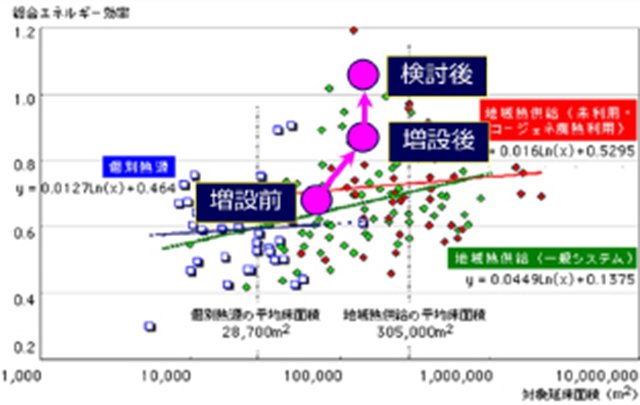

Existing Building Cx of the Air Conditioning System in Osaka Gas Building
Verification of the Environmental Performance of a Historical Office Building with Cogeneration
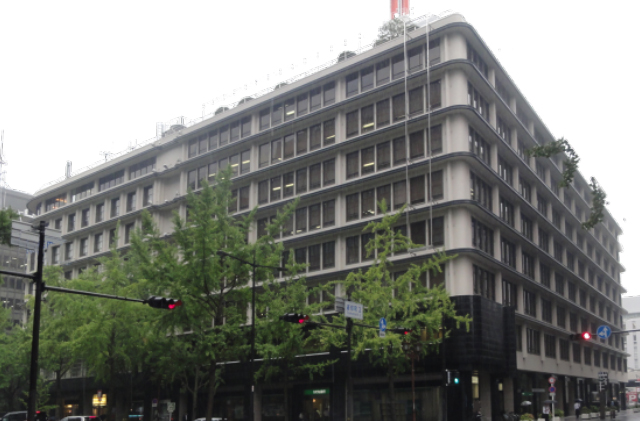
Period
April 2011 to March 2014
Team
Nobuo Nakahara, Norio Matsuda, Hideki Tanaka, Motoi Yamaha, Koichiro Aoki, and Toshiomi Hatanaka
Facility Data
The office building, constructed in 1933, is a historic building registered as a cultural property.
Summary of the Systems Commissioned
The building’s cogeneration system consists of two 280 kW power generators, two waste-heat recovery absorption chillers (400 USRT) and two direct-fired absorption chillers using natural gas (500USRT). At the time of construction, the dual-duct system with induction units was used. This was replaced with the system using fan coil units.
Summary of Commissioning
The commissioning spanned to the survey phase. The team verified the existing operational conditions of the systems and made proposals for improvement. The team analyzed the BEMS data from the recent four years after the retrofit of the HVAC systems to determine the changes in the central plant operation and the total energy efficiencyover the years. The secondary systems use the existing duct systems. As such, the operational conditions had not been verified. Therefore, the team made simplified measurements and estimated the amount of mixing losses. The total energy efficiency is around 70% throughout the year, but it decreases during the off-peak season. Therefore, the team made a proposal to improve efficiency using waste-heat recovery, optimizing the outside air intake and the supply air flow, and preventing mixing losses.
Existing Building Cx of Atsuta Branch of CHUBU Electric Power Co., Ltd.
Full-Scale Retro-Commissioning Realizing an over 25% of Energy Savings
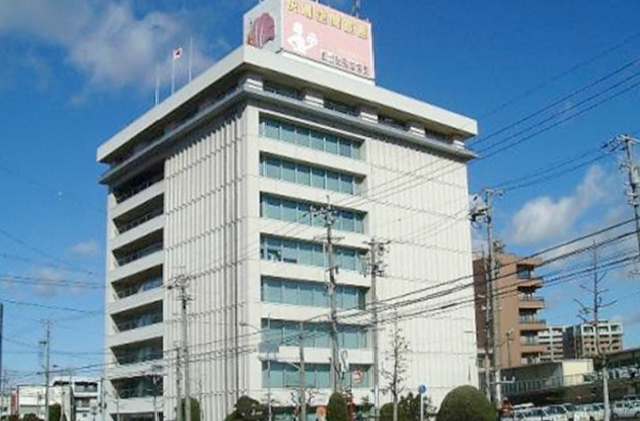
Period
April 2005 to August 2007
Team
Nobuo Nakahara, Norio Matsuda, Shigehiro Ichinose, Tomoya Kawaji, and Motoi Yamaha
Facility Data
Retro-commissioning starting from the design phase in the renewal of the old central plant and air conditioning systems of a utility company's office building.
Summary of the Systems Commissioned
Central plant equipment: Two air-cooled heat pump chillers and a total of 220RT from water-cooled chillers (with waste-heat recovery)
Chilled/hot water tanks: 600 cubic meters; chilled water tank: 200 cubic meters
Combined duct and fan coil units (zoned by air handlers according to the orientation)
Summary of Commissioning
In the retrofit project of the central plant and air handling systems, the commissioning was started from the design phase. The team optimized the design using MicroHASP/TES for Windows and formulated an operation plan. After the hand-over of the construction, the team conducted functional performance tests and verified the results. The commissioning improved the short circuits in the thermal storage tanks, optimized the HVAC controls, improved the indoor environment, and realized a 69% and 25% of reduction in energy consumption in winter and summer, respectively, compared to the figures before the renovation.
